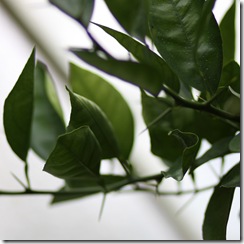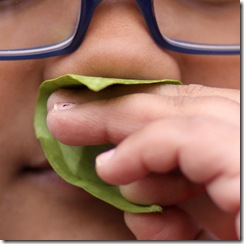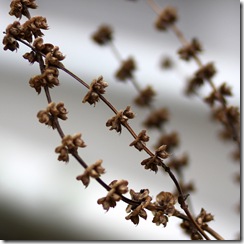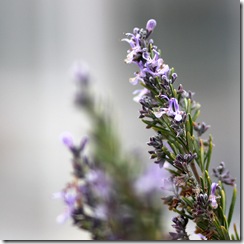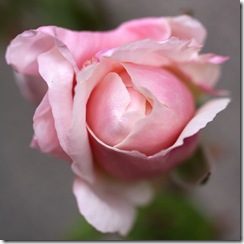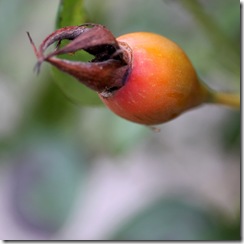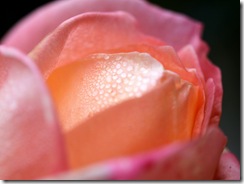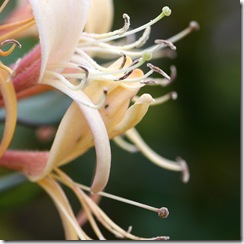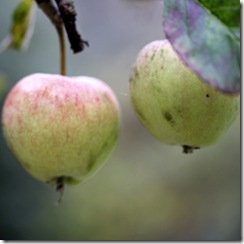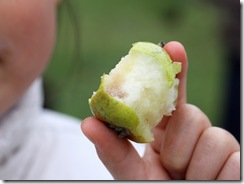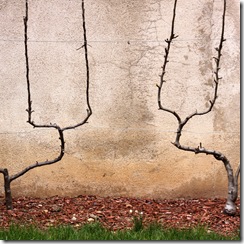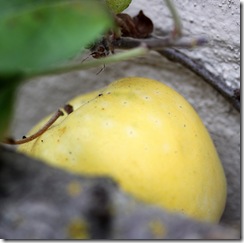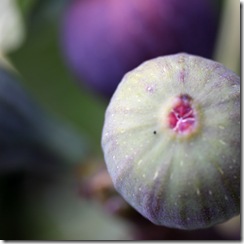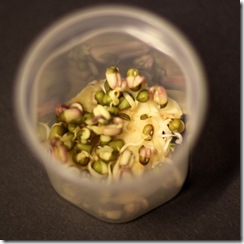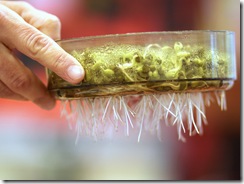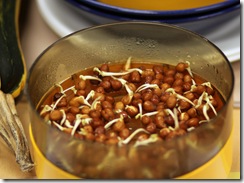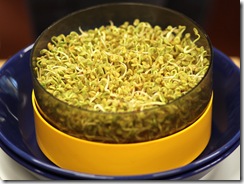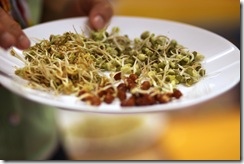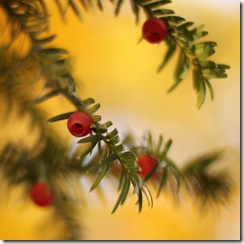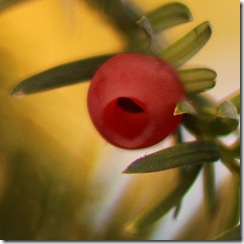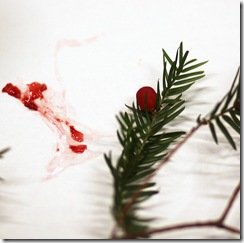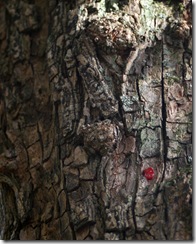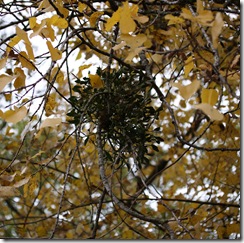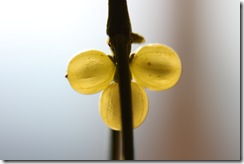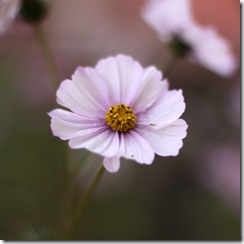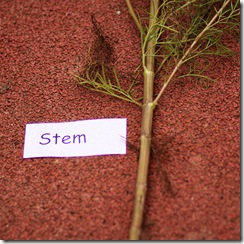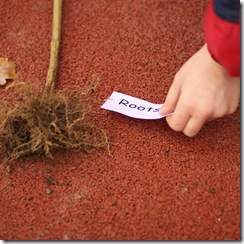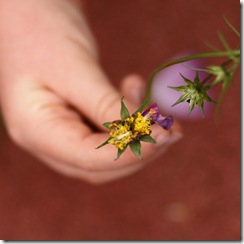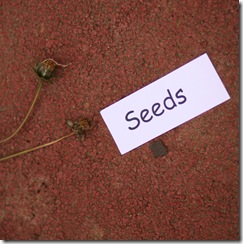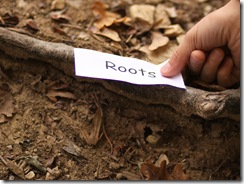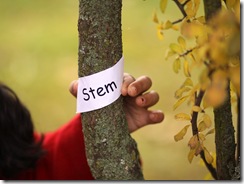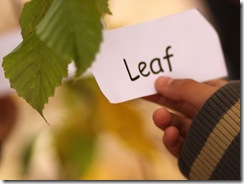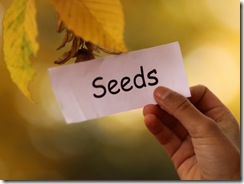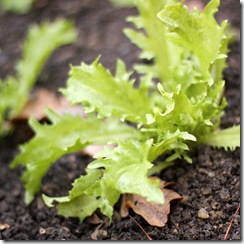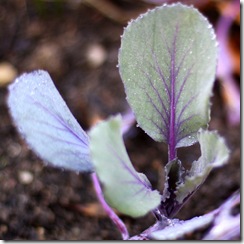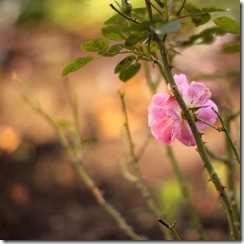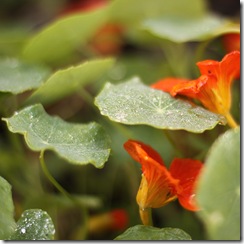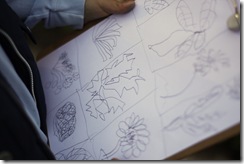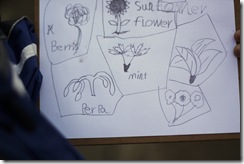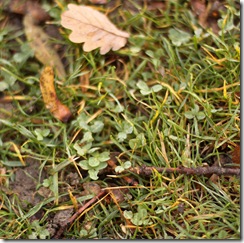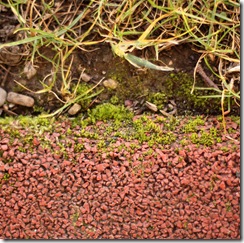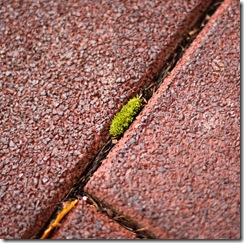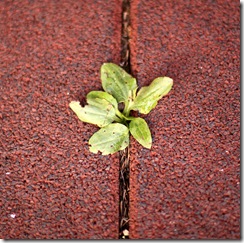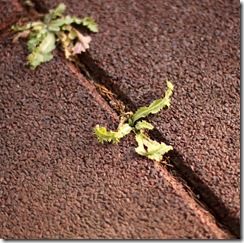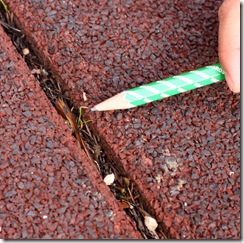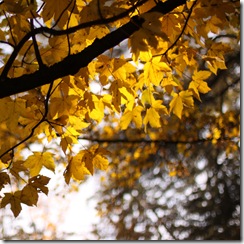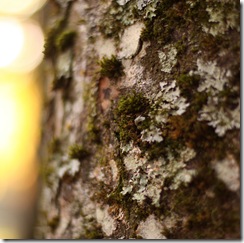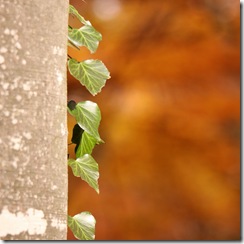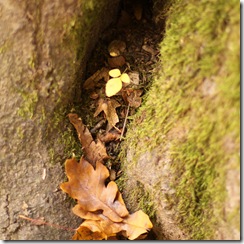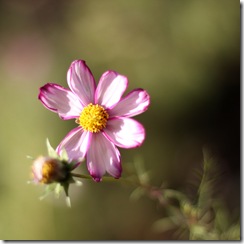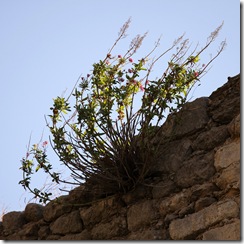On Friday we hopped on the school bus for the short trip to ‘Le Potager’, an old-fashioned privately-owned estate that dates from Victorian times. A wonderfully peaceful haven, somewhat at odds with the busyness of our modern world outside its walls.
A couple of buzzes on the bell resulted in the grand gates swinging open. We trouped through and crunched our way along a sweeping gravel drive.
Past a bamboo ‘forest’ and over a rickety bridge, into the walled gardens. Gardens, it has to be said, showing the distinct signs of autumn decay.
What sorts of plants would we find growing there and what sorts of uses would they have been put to?
What took our eye first was a sturdy plant with impressive spikes and shiny green leaves.
Sturdy in that it had pushed its way through the window of the greenhouse, which was vainly trying to contain it in its warmth. Although we hunted, we didn’t find any signs of fruit or seeds, but we couldn’t help noticing the fresh citrusy smell of the leaves.
Perhaps these were used as a flavouring.
We ventured further into the white-painted greenhouse…..
where we discovered that the plants that had grown there during the spring and summer months had been pulled up in order to let the seeds dry.
In the borders around the greenhouse, flavouring plants such as mint and rosemary flourished still.
We walked underneath archways laced through with roses, their heady scent still lingering on the chilly afternoon air.
In ancient times roses would have been used in medicine (to help stop bleeding and to ease tummy problems) but in the heyday of this garden, rose oil might have been used to make scent and rose water as a flavouring in cooking. Rose hips, the seed-containing fruit of the rose…..
may very well have been boiled with sugar to make a healthy syrup; full of vitamin C.
The creators of the garden must have loved scented plants. As well as the many different sweet-smelling roses…..
still-flowering honeysuckle wove its way through the various hedges.
There was an orchard area, where eagle-eyed children were quick to spot one or two apples that had escaped the harvest…..
as well as ‘windfall’ fruits that were equally tasty to children…..
and insects.
There were also some rather odd-looking trees, a little like these ones…..
Closer inspection revealed ‘knobs’ where branches had been cut off or pruned. For these were ‘espalier’ fruit trees, specially pruned so that they would grow flat against a wall, and not take up too much space. And tucked down between the branches, another fruit that had escaped the harvest.
Right in the middle of the garden was the most enormous spreading fig tree that I have ever seen. It was still laden with fruit, which were in the process of turning from green to lush deep purple.
We left after an hour of using our senses; of tasting, of smelling, of feeling and of seeing. Pockets bulging with the ‘treasures’ that we had gleaned, we crunched our way back towards the very grand gates, where our bus awaited us; to take us back to the 21st century!
